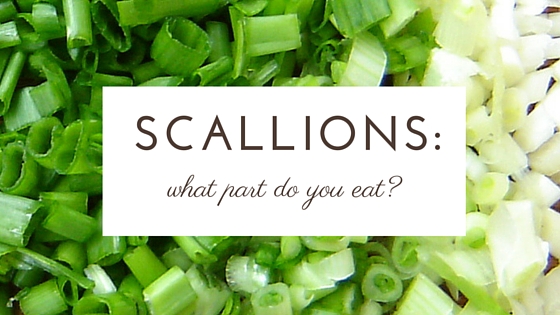There’s a raging debate going on in the culinary world, and it revolves around a cousin of the onion – the green onion, that is. There seems to be two sides to the scallion debate: the first is those that think the green part is the only part you use. The second is the group that believes the white and light green parts of the scallion are what you’re after.
Well, we’re going to put an end to the debate by telling both sides: You’re wrong. That’s right – both sides of the scallion are equally edible and delicious in all types of dishes. But despite the fact that each side comes from the same small onion, there are different ways that each should be used in dishes.
How to Cook the White Part of the Scallion
When we talk about the “white part” of the scallion, we’re talking about the white roots all the way to the light green stem of the vegetable, where it’s still stiff feeling. Obviously, you’ll want to nip off the scraggly root of the vegetable. After that, dice the white part and use this to saute or simmer with other ingredients. Because the white part of the scallion is thicker and tougher (and has a more intense and concentrated flavor), it’s better for cooking long-term as it allows the flavor to dissolve into the cooking.
How to Use the Green Part of the Scallion
The soft, green part of the scallion is almost always used as a garnish. We’ve used it on top of soups, to top off mashed potatoes, and even to garnish meat. But, it can be used in the cooking process too. However, because the green part of the scallion is thinner and softer than it’s white counterpart, it cooks much more quickly and can get mushy and burnt very quickly. That said, if you’re using it in your cooking, cook it in dishes that use low heat over time to avoid over cooking it.
Do you have any favorites uses for scallions? Share them with us in the comments! Or better yet, share your scallion laced recipes with us!






My scallions have gotten huge and have bulb like blossoms on their tops. The leaves are pretty thick not like the think ones you get in the store. Are they still safe to eat? Do they need to be cooked differently since they are mature?